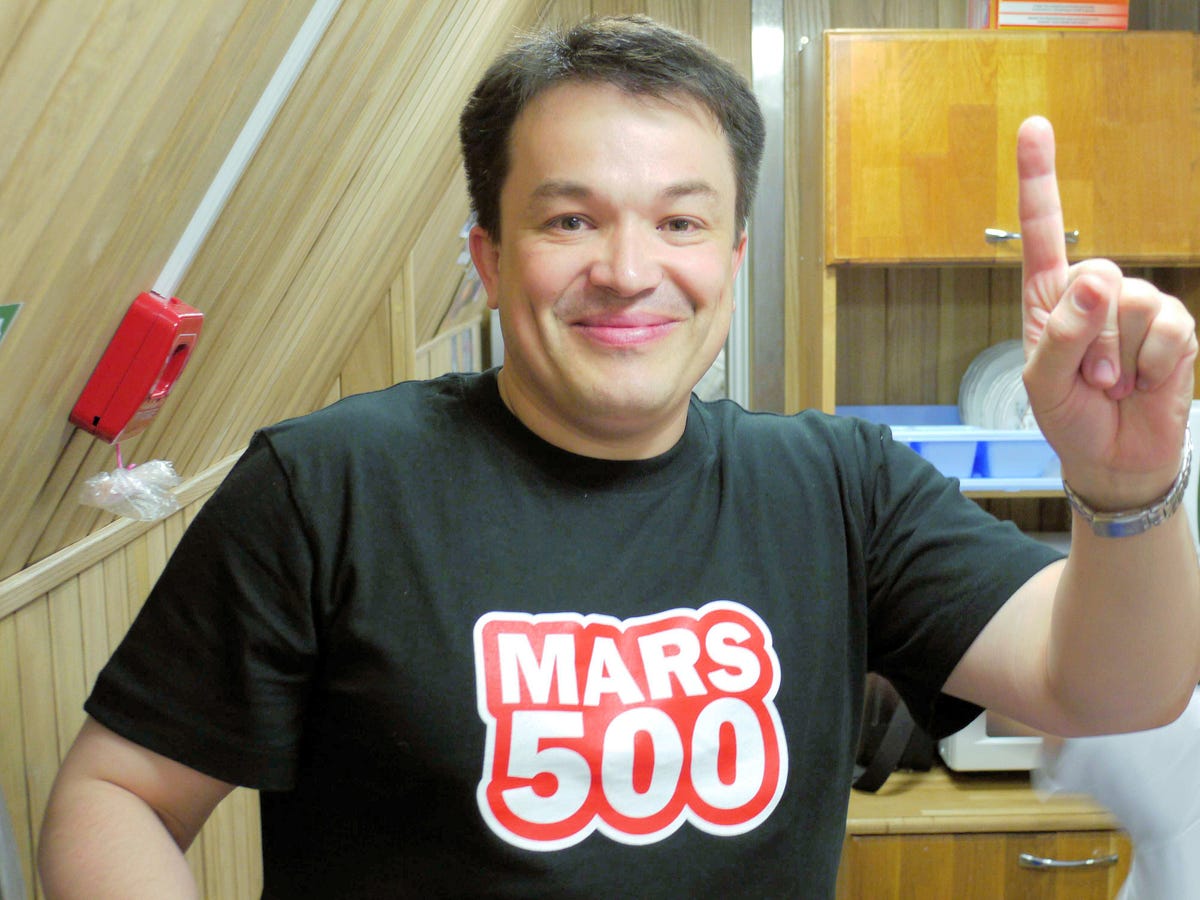Mars500: Home sweet isolation chamber (photos)
Six men have sequestered themselves in an assemblage of four tightly proportioned, hermetically sealed modules, where they'll remain till November 2011, and pretend they're flying to Mars and back.

Sukhrob Kamolov
This cheery fellow is Sukhrob Kamolov. He's a Russian crewmember in the Mars500 project, a landlocked simulation of a flight to Mars and back.
In June, he and five other men sequestered themselves in an assemblage of four tightly proportioned, hermetically sealed modules, where they'll remain till November 2011. While they won't have to worry about being hit by any interplanetary debris or being sent off-course by a math error deep in the telemetry system, they'll otherwise be conducting themselves as if isolated far from Earth in very close quarters. In other words, that smile will surely be tested.
Romain Charles
Romain Charles, a crewmember from France, navigates from one module to another through an interconnecting tunnel. The Mars500 facility is located in Moscow, where the project is run by Russia's Institute of Biomedical Problems, with "extensive participation" by the European Space Agency, as ESA puts it.
The Russian space program is no stranger to long-lasting sojourns outside Earth's atmosphere: cosmonaut Valeri Polyakov, for instance, holds the record for the longest continuous stay in space, having holed up in the Mir space station for 437 days from January 1994 to March 1995. And countryman Sergei Krikalev has piled up more cumulative time in space than any other person: 803 days.
Mars500 hatch
But a mission to Mars would be different in a number of significant ways. It would break free of the relatively cozy closeness to home enjoyed by the International Space Station and other orbital facilities. There would be neither resupply nor visitors, in contrast with the ISS, where space shuttles and other vessels dock from time to time. Real-time communications (or nearly so) with mission control would give way to long lag times.
And there will likely be no wood paneling, in contrast with the interior design of the Mars500 modules.
Mars500 floor plan
Isolation facility
That layout corresponds to this series of tubes in the IBMP facility in Moscow.
This will be the entirety of the landscape for the current six-man Mars500 crew for 520 days, or about 17 months. Last summer, the Mars500 project wrapped up a warm-up stay with a different sextet, who occupied the isolation facility for 105 days. That crew's warm-and-fuzzy public diary entries gave the impression that the three-and-a-half-month stay was no more stressful than a suburban sleepover.
Institute of Biomedical Problems
Alexey Sitev
Control room
This is 31-year-old automotive industry engineer Romain Charles in the "control room." The simulated mission has three main phases: 250 days in transit to Mars; 30 days for surface operations, during which time three crewmembers move to the Martian surface simulator; and 240 days for the return trip to Earth.
Here are the milestone dates:
• June 3, 2010: Depart from Earth
• June 14, 2010: Depart from Earth orbit
• July 11, 2010: Begin transfer flight to Mars
• December 18, 2010: Arrive in Mars orbit
• January 27, 2011: Land on Mars and begin surface operations on Mars
• March 8, 2011: End surface operations and return to main ship
• April 17, 2011: Begin return trip to Earth
• September 24, 2011: Return to Earth orbit
• November 6, 2011: Land on Earth and emerge from isolation.
Diego Urbina
Diego Urbina, a 27-year-old electrical engineer from Italy, works joysticks at a laptop computer. ESA says the crew's duties include regular playing of unspecified video games, with the goal of helping to develop computerized "electronic partners" for crewmembers on actual deep-space missions.
"In my free time," Urbina wrote in a July 7 diary entry, "I have been also busy programming an e-mail client and a Twitter client that allow me to send and receive information in the structured way that is needed for mission control, just brushing up my programming skills! (I'm programming it on MATLAB, for the curious)."

